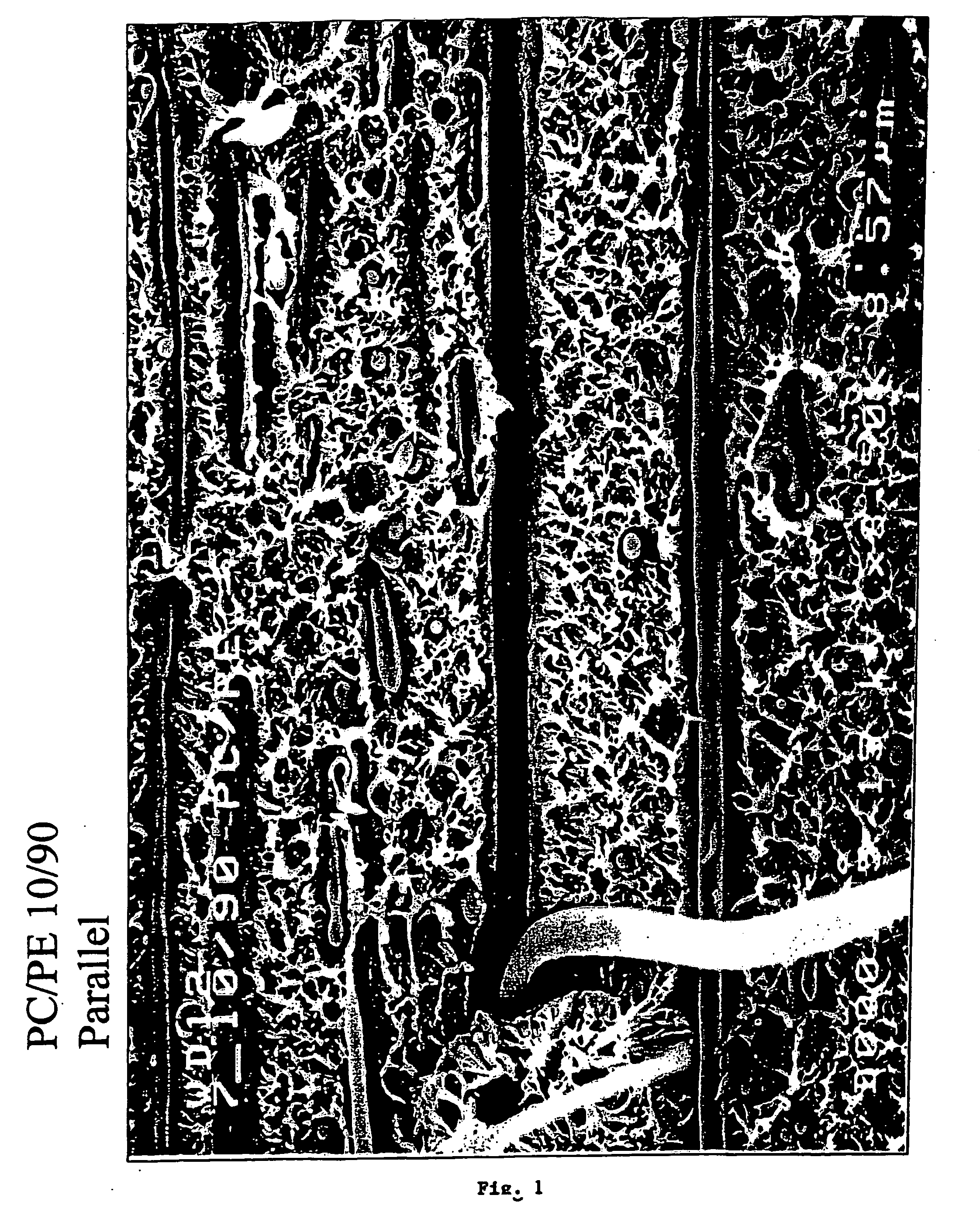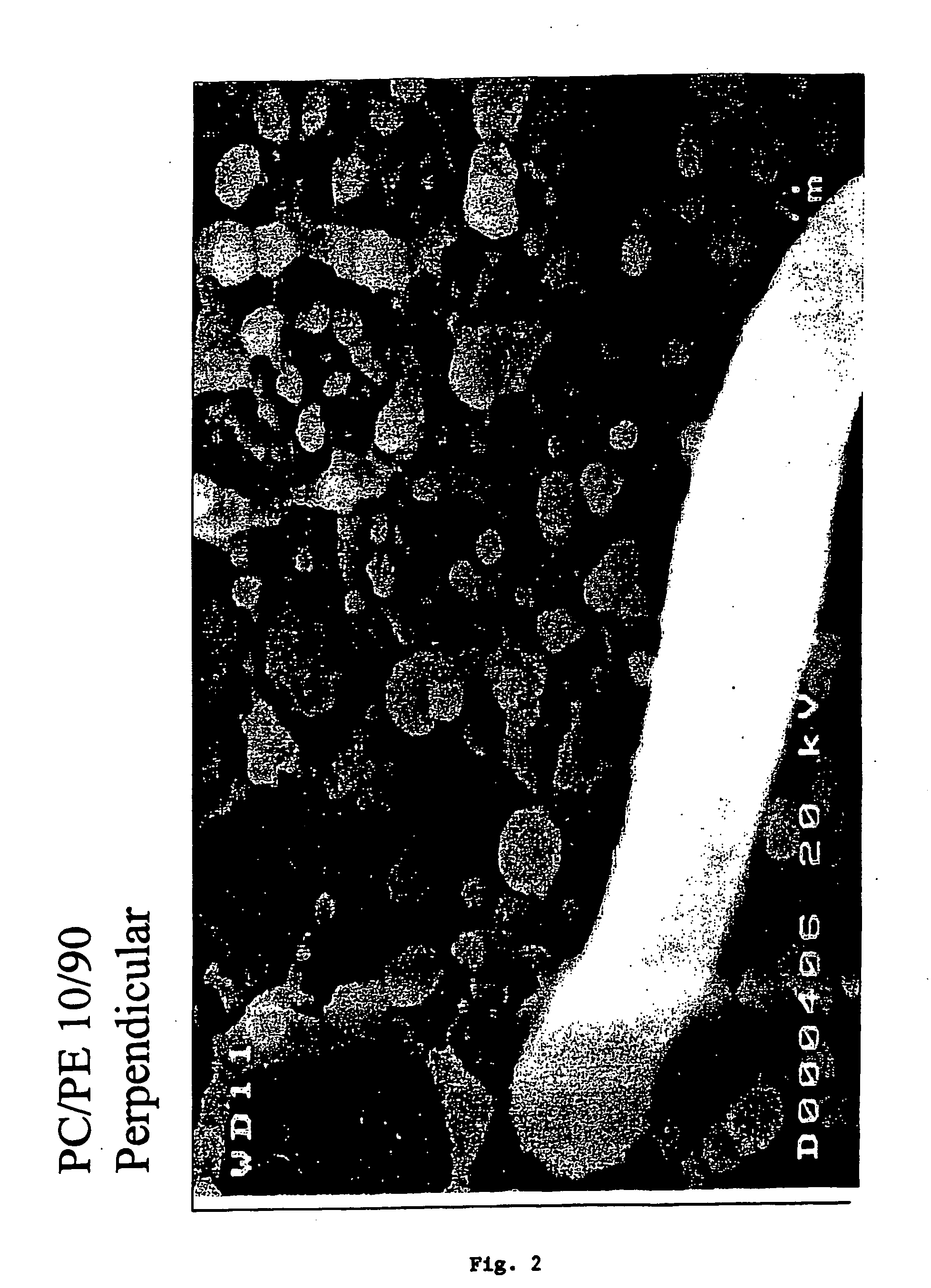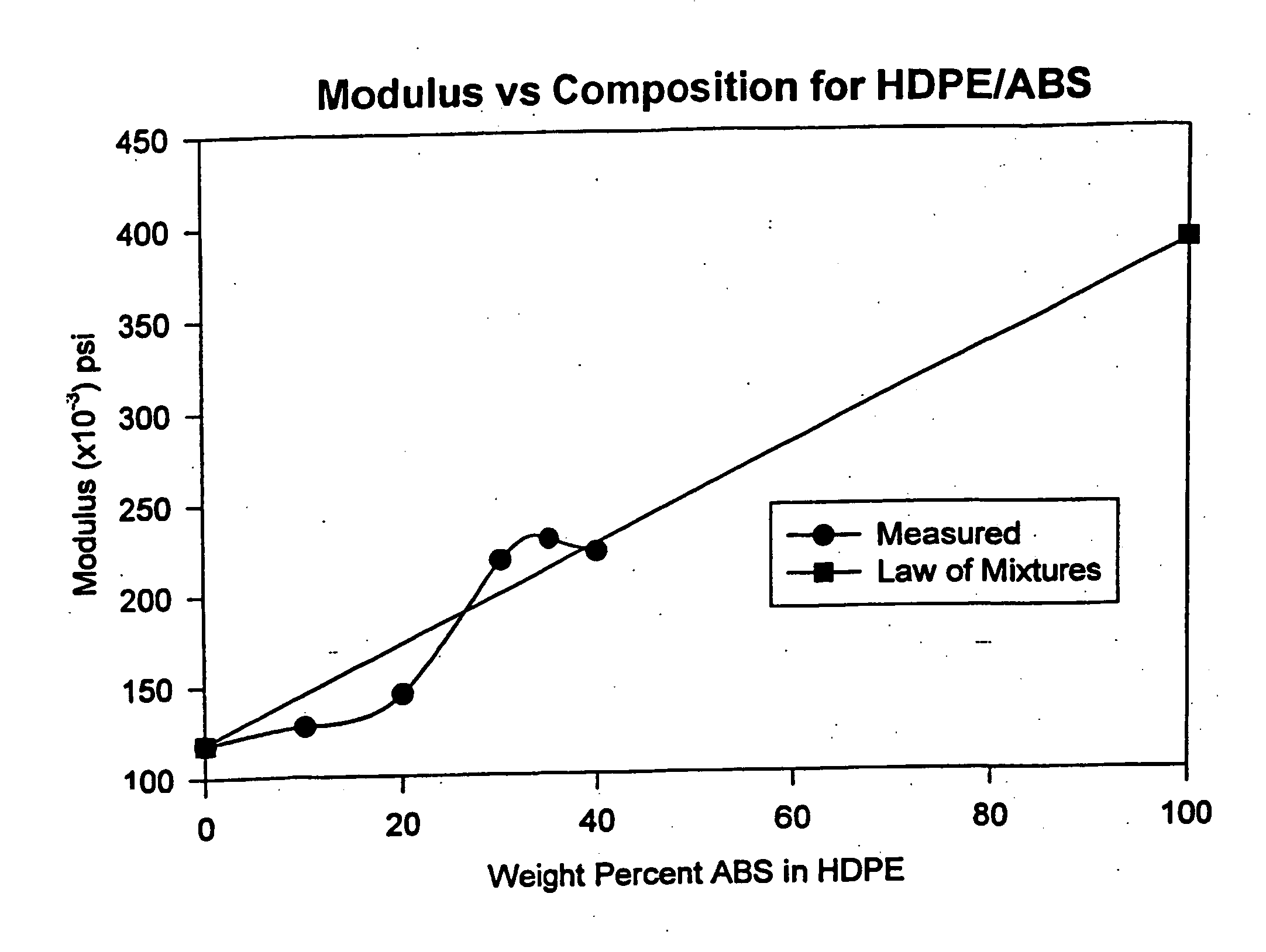Compositions and methods of making plastic articles background
a technology of composition and method, applied in the field of composition and method of making plastic articles, can solve the problems of small proportion of size and weight, and few recycling possibilities of these materials
- Summary
- Abstract
- Description
- Claims
- Application Information
AI Technical Summary
Benefits of technology
Problems solved by technology
Method used
Image
Examples
Embodiment Construction
[0013] HPPE as well as low-density polyethylene (LDPE) may be used in the polymer blends and plastic articles of the present invention. Modern Plastics Encyclopedia describes HDPE as having a density of more than 0.940 gm / cc, whereas LDPE is described in terms of having a density between 0.916 gm / cc and 0.940 gm / cc. Regardless of the type of PE, it has a melt flow measured in accordance with ASTM D1238, of less than about 1 g / 10 min at 190 C / 2.16 Kg. In preferred embodiments, the PE has melt flow of less than 1 g / 10 min at 190 C / 2.16 Kg, in which embodiments the PE is said to possess a fractional melt flow. HDPE is the preferred PE for use in the present invention. HDPE can be obtained from a variety of sources; it may be virgin or recycled in nature. Recyclable HDPE is contained in commercial products such as milk bottles, water bottles and detergent bottles.
[0014] PC in accordance with the present invention is a synthetic thermoplastic resin derived from, amongst other sources, b...
PUM
| Property | Measurement | Unit |
|---|---|---|
| diameter | aaaaa | aaaaa |
| temperature | aaaaa | aaaaa |
| melt flow | aaaaa | aaaaa |
Abstract
Description
Claims
Application Information
 Login to View More
Login to View More - R&D
- Intellectual Property
- Life Sciences
- Materials
- Tech Scout
- Unparalleled Data Quality
- Higher Quality Content
- 60% Fewer Hallucinations
Browse by: Latest US Patents, China's latest patents, Technical Efficacy Thesaurus, Application Domain, Technology Topic, Popular Technical Reports.
© 2025 PatSnap. All rights reserved.Legal|Privacy policy|Modern Slavery Act Transparency Statement|Sitemap|About US| Contact US: help@patsnap.com



